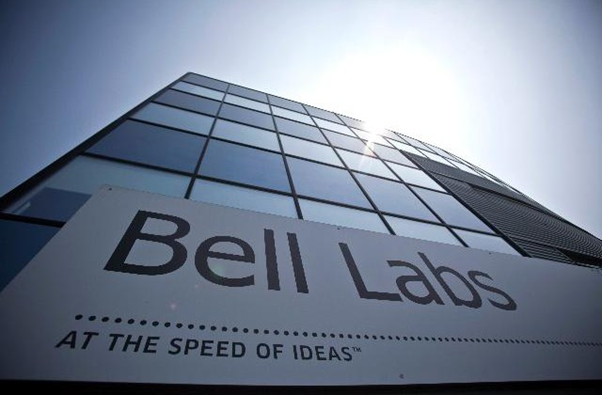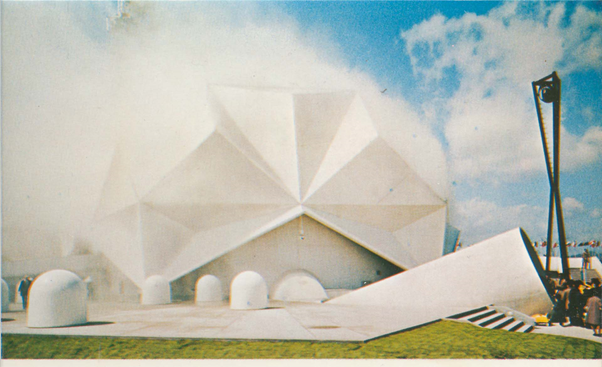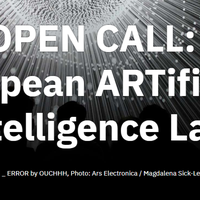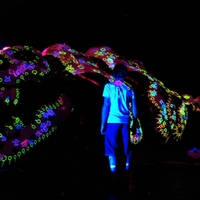#art&technology: Outside the Boundaries | Experiments in Art and Technology (E.A.T.)

In culture360.ASEF.org’s series of articles on #art&technology, Parul Wadhwa features Experiments in Art and Technology (E.A.T), a non-profit organisation established by Finnish multinational telecommunications, Nokia corporation, to develop collaborations between artists and technologists.
Experiments in Art and Technology (E.A.T.) is a non-profit organisation established by Nokia corporation, to develop collaborations between artists and technologists. Today, the misnomer, Creative Technologist could be attributed to several such collaborations by pioneers of art and technology.
In this context, art is referred to as Digital Art, an artistic practice that uses digital technology as part of the creative process. Since the 1970s, various names have been used to describe this process, including graphic art, computer art and multimedia art but most recently, Digital Art is placed under the larger umbrella of New Media Art.
E.A.T. was officially launched in 1967 as a collaborative effort by two engineers and two digital artists. The engineers were Billy Kluver and Fred WaldHauer and the artists were Robert Rauschenberg and Robert Whitman.
In their earlier collaboration called 9 Evenings: Theatre and Engineering which consists of performance art presentations, was a larger collaborative piece between almost thirty engineers and artists. These art performances still resonate today as forerunners of the close and rapidly evolving relationship between artists and technology.
Bell Labs at Nokia Corporation has a long history of fusing technology and the arts. Their pioneering collaboration program between artists and technologists known collectively as Experiments in Arts and Technology (E.A.T.) which has over the years grown into a non-profit, is the hallmark project of Nokia Bell Labs.

Nokia Bell Labs building
Bell Labs has a long history doing collaborations between digital arts and technology. The E.A.T program is unique in its contribution to arts and technology. The mission of Bell Labs within the E.A.T. program is to create new modes of empathic communication. The goal is to break down barriers that exist between people/race/culture/religion by enabling higher modes of communication and generate empathy for the “other”. The goal of this program is to invent technology that will augment senses and enable new forms of communication, interaction and sharing between people using experimental forms of arts and technology.
They have been doing that formally through their flagship Artist Residency Program (A.I.R) inviting seminal digital artists and scientists to collaborate in their labs. E.A.T. has been a little dormant for the past decades, because when it started way back, in many ways the ideas were so ‘avant-garde’ that they were well ahead of their time.
However, as art and technology have become deeply intertwined and with the rise of smartphones and their canonical apps, cloud based creative software platforms, sophisticated digital image capture devices, and immersive, large scale digital displays or head-mounted VR/AR goggles, art and technology are becoming truly coupled, or perhaps even symbiotic. At the heart of E.A.T is the intent to create a space for dialogue between emerging technologies and diverse and traditional forms of art, music, dance and visual art.
E.A.T’s artistic work is very intriguing and has entered the canons of experimental theater, performance art, noise art and experimental video to bridge the gap from the eras of work from the 60s influenced by Dadaism, Fluxus artists and fusing that with work of the current generation of digital artists for whom new-media and technology are synonyms.
For instance, recently, E.A.T. included a collaboration with singer songwriter Beatie Wolfe for its 50th year anniversary, which involved the artist releasing her album as the world's first live 360˚Augmented Reality stream, setting a presence for AR musical collaborations and applications. Her work, Raw Space combined 360˚ stereoscopic videos with real-time AR animations, the effect was a Fantasia-like Live streamed album.

Beatie Wolfe’s 360˚Augmented Reality stream
Starting in the late 1960s, E.A.T established twenty-eight chapters to promote collaborations and encourage synergies between artists with a purpose to expand the artist’s role in social developments related to new technologies. E.A.T. saw itself as a catalyst for stimulating the involvement of industry and technology with the arts. The organidation worked to forge effective collaborations between artists and engineers through industrial cooperation and sponsorship from wealthy technology patrons. Membership was opened to all artists and engineers.
In the 1970s, emerging hardware technologies used in communications, data processing, and control and command instrumentation led to a new generation of software systems that were of great interest to artists. Realising that artists could contribute significantly to the evolution of this software, E.A.T. generated a series of projects in which artists participated in these areas of technological development. E.A.T. also undertook interdisciplinary projects that extended the artists' activities into new areas.
Seminal Work
E.A.T. brought wireless sound transmission, video projection and doppler sound that had never been seen in the art of the 1960s. The pinnacle of E.A.T. is generally considered to be the Pepsi Pavilion at Expo '70 at Osaka, Japan where E.A.T. artists and engineers collaborated to design and program an immersive dome that included a fog sculpture by artist Fujiko Nayaka. Organised by E.A.T. founders Billy Klüver and Robert Whitman, the project was led by a core design team and a group of over 75 artists and engineers.

Fog Sculpture by E.A.T at Pepsi Pavilion
Artists and the art community responded enthusiastically to E.A.T. By 1969, given early efforts to attract engineers, the group had over 2,000 artist and engineer members willing to collaborate and experiment. Expressions of interest and requests for technical assistance came from all over the world. People were encouraged to collaborate and start local chapters. Their ongoing Technical Services Program also provided artists with access to new technology by matching them with engineers or scientists for a one-to-one collaboration on specific projects.
E.A.T. was not committed to any one technology or type of equipment. The organisation tried to have the artist work directly with engineers in the industrial environment where the technology was being developed. E.A.T. also initiated interdisciplinary events and projects involving artists and new technology.
Projects realised at this time included: The Anand Project (1969), which developed methods to produce instructional programming for India's educational television through a pilot project at Anand Dairy Cooperative in Baroda (India); and finally, a large-screen outdoor television display system (1976-1977) for the Centre Pompidou.

E.A.T’s The Anand Project (1969) in Ahmedabad, India
In 1980, to detail its activities and projects, E.A.T. put together an archive of more than 300 of its own documents: reports, catalogues, newsletters, information bulletins, proposals, lectures, announcements, and reprints of major articles. Complete sets of this archive were distributed to major libraries in Paris (France), Stockholm (Sweden), Moscow (Russia), Ahmadabad (India) and London (England).
The archive material reflects the great geographic, technical and artistic diversity of E.A.T.'s activities. Furthermore, the collection uniquely documents a vital and important moment in the history of post-war and avant-garde art, as well as artists' continuing involvement with new technology in the 20th century.
In 2002, a reunion was hosted to celebrate the history of these regional liaisons and consider the legacy of E.A.T. for artists working with new and emerging technologies. Accomplished Curator and expert on Digital Arts, Christiane Paul rightly pointed about the accomplishments of E.A.T out in her book, Digital Art (World of Art series), “E.A.T initiated and carried out projects that expanded the role of the artist in contemporary society and helped explore the separation of the individual from technological change”.
This article is written by Parul Wadhwa, who has had etensive experience as a new-media artist, filmmaker, game designer and educator and researcher across Asia, Europe and the US. She holds a terminal degree, MFA in Digital Arts and New Media from University of California Santa Cruz and has worked and taught with 5+ years of research experience. She was awarded the Regents Scholarship from University of California Regents, the highest honor awarded at the UC and Art Dean's Award for Excellence in Arts amongst several other departmental fellowships in film, games and arts.
Similar content
posted on
03 Jul 2011
deadline
12 Nov 2019
deadline
10 Nov 2011
deadline
26 Sep 2012
from - to
19 May 2016 - 20 May 2016
deadline
01 Nov 2019






